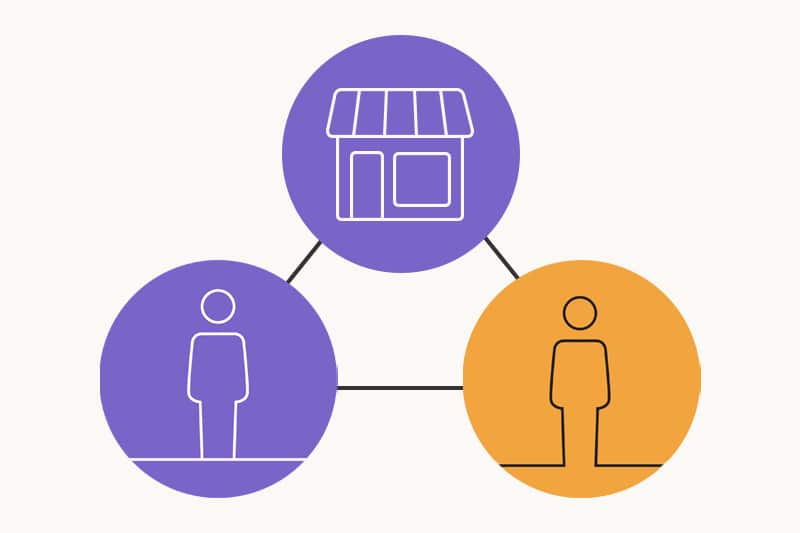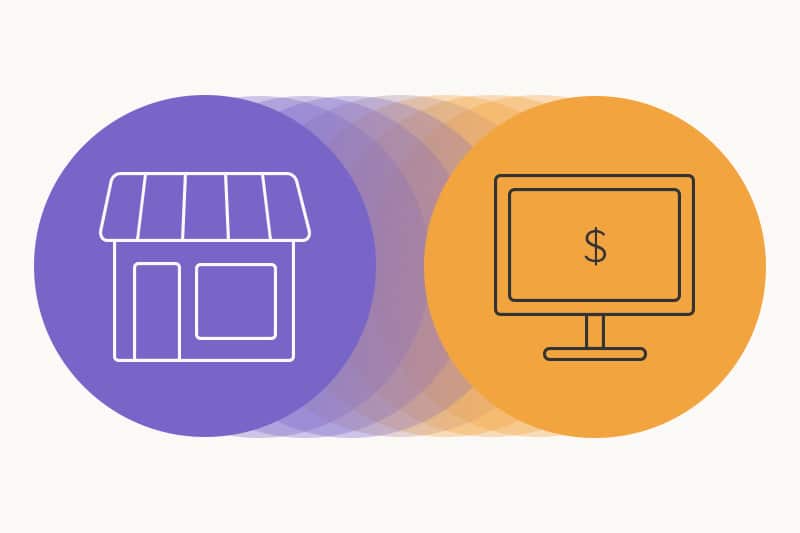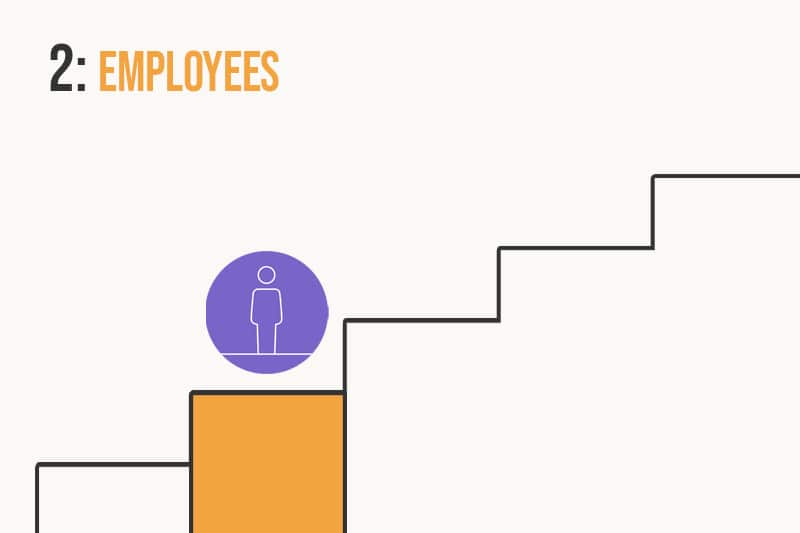Retail stores throughout the world face tough competition, tight margins, and a rapidly evolving industry. In this article, we examine how retail optimization can improve store operations and reduce costs – and, most importantly, create a better customer experience.
Key Takeaways: Retail Optimization
- Retail optimization combines data analysis with observation and human-centered design to improve the in-store experience.
- It starts with analyzing the data you have and understanding your store’s current baselines.
- By analyzing and optimizing various aspects of your retail operation – including employee operations, inventory management, supply chain, and promotions – you can remain competitive in an intense market.
- You can also analyze your customers’ in-store experience, which creates greater customer engagement and loyalty.
Understanding Retail Optimization
Retail optimization is a broad term. At its broadest, it simply means improving retail store operations; by extension, that includes the customer experience as well as the employee experience. As we discussed in our earlier article on improving the in-store retail journey, your business will thrive when your employees feel engaged and supported. In fact, you could think of employees as your internal customers.

So, employee training and wellness and customer engagement factor into retail optimization. But every aspect of store operations can also be affected by retail optimization. In this article, we’re going to be focusing on the following areas:
- In-store operations (including employee training, support, and scheduling)
- Inventory management
- Supply chain management
- Customer experience
Businesses today run on data; optimizing your retail store is no different. That’s why most resources in retail optimization lean heavily into data analytics. Later in this article, we’ll consider the data you need, the metrics you can track, and how this will lead to better decision-making.
In summary, retail optimization means using data to ensure your store runs at peak efficiency. It can include every aspect of your business, from marketing to maintenance. And it should always be done in a human-centric way, as we’ll discuss further.
How E-Commerce is Shaping Retail Optimization
We can’t talk about retail optimization without addressing e-commerce – specifically, e-commerce’s role in both customer expectations and retail optimization.
First, how has e-commerce influenced the in-store retail experience? It’s changed customer expectations around wait times and personalization. Customers now want speed and convenience in-store as well as online.

E-commerce has also affected the role of physical stores themselves. Customers are checking out items in-store and ordering them later online – a phenomenon known as showrooming. They’re ordering items online and picking them up at their local store. And they’re increasingly using their mobile devices as a supplement to their in-person shopping. This has created the concept of phygital, or the blending of online and offline worlds, that we discussed in Understanding and Mapping the Retail Customer Journey.
Finally, e-commerce has provided a lot of data (and insight) into customer wants and needs. Retailers can use this to help shape their optimization plans. For more on how e-commerce has affected retail optimization, see this McKinsey report and this article on 3 Customer Service Trends Boosting E-Commerce Sales.
Now, let’s head back to the physical side of things and talk about why retail optimization is so vital.
Importance of Retail Optimization in Today’s Market
From the time you order your inventory to the time your customer walks away from the checkout with a bag full of products, your business is generating data. Retail store operators can use this data to streamline activities throughout the store. Let us count the ways:
- Enhancing the effectiveness of inventory management. This helps retailers avoid overstocking and out-of-stock situations.
- Improving in-store operations, including layouts, displays, and traffic flows.
- Promoting better customer experience and more effective customer support.
- Providing data-backed insights for faster decision-making.
- Reducing unnecessary costs due to employee over- or under-scheduling, stock and supply chain problems, etc.
- Balancing pricing and promotional activities to drive increased revenue.
Retailers who optimize their operations will obviously have a competitive advantage over those who don’t. In fact, very few retailers (if any) can afford to ignore retail optimization.
Running an un-optimized store means unnecessary spends and wasted energy and effort. Improving your processes means increasing your revenue and profitability while providing a better customer experience. So, let’s examine five steps retailers can take to create a more efficient, human-centric retail operation.
5 Steps to Retail Optimization
Before we dig into these steps, we want to start by addressing a misconception around using data to optimize retail operations, experiences, etc.

Many people have the idea that human-centered design and data are on opposite sides of the spectrum; you can either be data-driven or you can be human-centric, but you can’t be both. The truth is quite different.
As CX practitioners, we frequently use data to understand and analyze the customer and employee experience. We use it to empathize with the customer journey and build customer journey maps. Analyzing the data from thousands of reviews, transactions, etc. gives us a much fuller picture than talking to ten or twenty people. We need data to illuminate the customer experience just as we need person-to-person conversations to understand its details.
Of course, no business owner wants to put a robot in charge of their decision-making. Instead, the wisest ones use data to work towards being human-centered. With that in mind, let’s consider how we can use data to optimize retail operations.

Step 1: Using Data to Analyze Your Retail Operations
Your first step is to understand:
- What data sources you have.
- What data is available (both what you’re currently collecting and what you can collect or acquire in the near future).
- What you want to measure and why.
Instead of simply tracking every possible key performance indicator (KPI) or metric, we recommend tying your KPIs to your goals. We also are going to assume that you’ve identified and prioritized your goals into a now-next-later framework.
Once you understand the purpose behind collecting your metrics of choice, it helps you know the common metrics in retail operations. Here are just a few:
- Number of visitors – How many people visit your store during a given time period.
- Stay time – The average time people spend in your store.
- Number of returned/repeat visitors – How many people regularly return to your store.
- Sales volume – How many units of a particular product you sell during a month, quarter, etc.
- Average basket size – The average number of products purchased in one transaction.
- Average basket value – The average amount spent per transaction.
- Sales per square foot – Measures your store’s sales productivity and how well you’re utilizing space.
- Inventory turnover ratio – How quickly inventory is sold. Inventory that takes a long time to sell usually means the store is losing money on those items.
This is just a very short list, but it gives you an idea of just how much there is to track. Whatever you select, the first step is to measure your current performance. Once you’ve established a baseline, you can begin to investigate ways to improve performance in that area.
The Role of Data in Retail Operations Analysis
Experienced store operators can probably remember a time before we had all this emphasis on data. And the world chugged along just fine. So why this push to data-directed operations?
One reason is that data eliminates much of the guesswork that used to go into decisions. Yes, there are still options to consider and factors to weigh, but data gives a clear idea of what’s worked and what’s likely to keep working.
Using AI-powered data analytics is also much faster than doing all that work by hand. Information is readily available; in many cases, you can access KPIs on demand. Some management tools allow users to create predictive forecasts and model the effects of different decisions. The upside is that data reduces the time it takes to make decisions. It also helps retailers get a more accurate picture of what’s happening in their store.
Note:The order of the following steps isn’t deterministic – they can be done in any order, and you may need to address some but not others. Even so, it’s a best practice in retail optimization to be aware of all these areas. You should also consider how changes in one area may impact other areas.

Step 2: Optimizing Employee Scheduling and Engagement
Optimizing employee schedules is directly tied to optimizing the entire retail experience. If too few employees are working at a given time, operations slow down and customers get frustrated. If too many are scheduled, it eats into your profit.
Effective training is also key to better employee performance. According to research compiled by Zippia:
- Companies with employee development opportunities have 34% more employee retention.
- Organizations with comprehensive training programs have 218% more income per employee and 24% higher profit margins.
- Employee training increases workplace engagement by 21% and productivity by 17 percent.
Building an Optimized Employee Experience
So, how can you ensure you’re optimizing the employee experience?
- Build employee-manager relationships. This will help employees feel supported and give them a mentor within the organization.
- Provide training, encouragement, and feedback. Most people value professional growth and appreciate relevant job training. Not only does this make their work easier, it helps them feel connected to the company. It’s also important to provide feedback and encouragement to employees; this builds confidence and engagement.
- Acknowledge effort and a job well done. Humans thrive on positive feedback. And acknowledgement doesn’t have to come in the form of cash rewards; verbal recognition also boosts employee morale. A lack of acknowledgement, on the other hand, quickly leads to a unmotivated workforce that feels unappreciated and ready to leave for the next job.
- Provide growth opportunities. A lack of growth opportunities is often cited by employees who leave retail roles. And this is fair: no one wants to be stuck doing the same job for their entire working life. By providing career development programs and career pathways, retailers can give employees the chance to grow within the organization – and be more passionate about their current role.
Scheduling is another key area for employee engagement. It can be hard to balance employees’ availability, preferences, and hours needed with your budgetary and operational goals. But remember: proper scheduling is essential to both customer satisfaction and employee health. Keep that goal in mind when building a schedule. Are there activities that require a particular skill set? Make sure to schedule employees with those skills during that time. And get employee feedback about how past and current schedules have worked – not just for their personal preferences, but for the store’s smooth operation.

Step 3: Inventory Management and Cost Reduction
It’s easy to understand the impact of inventory management on both budget and customer happiness. Keep too much in stock without selling it and you tie up (and possibly lose) cash. Don’t keep enough inventory on hand and you can’t give customers what they want.
Articles, books, university courses, and entire careers have been dedicated to inventory management. What works for one company – or retailer – may not work for another. So, how can you optimize inventory operations to reduce cost while still ensuring customer satisfaction?
Solutions for Inventory Cost Reduction
Any solution to inventory issues starts with data. For example, understanding which inventory management methods to deploy for your organization can only result from a thorough understanding of how inventory moves through the pipeline and finishes up in the customer’s cart.
An interesting and often overlooked aspect of inventory management is linked to personalization. Personalization rests on customer and order data; this same information can be aggregated and used to predict when demand will rise for certain items. Other popular trends – such as real-time inventory visibility, computer vision, and improved automation – also require data to work efficiently. This ultimately allows retail managers better control over their inventory, which results in less waste and fewer stockouts.

Step 4: Enhancing Customer Experience
We’ve tackled this in our earlier article on decoding customer satisfaction, so let’s just hit a few of the highlights:
- Focus on quality: Providing items and services that meet customer expectations is critical to a great customer experience.
- Craft loyalty programs with care: Loyalty programs can be an excellent incentivizer, but only when they’re tailored to what the customer actually wants and needs.
- Personalize the in-person experience: Today’s retail customers have been conditioned by e-commerce to expect personalized experiences, so it’s up to retailers to deliver on that as well. Having well-trained, helpful employees that can offer expert advice is one way to provide personalized service.
Another way to enhance the customer experience is to use feedback loops to check your progress. We mentioned this in our article on How to Improve Customer Experience in Retail Stores, and we go into detail on how to harness feedback loops here.

Step 5: Leveraging Real-Time Data for Decision Making
Collecting and analyzing data in real time is now entirely possible. But why do it that way when we’ve used historical data for years – and with some significant success?
One reason is that historical data is always about what has happened, not what’s happening now. It can only tell us about last month, last quarter, or last year. While this information is valuable, it’s not always accurate. Why not? Because circumstances change quickly, as the COVID-19 pandemic taught us. What was applicable three months ago may not be available today.
There’s another reason why real-time data can be useful: it captures a more complete picture. Regarding perceived data vs. real data in customer surveys, Greg Kihlstrom notes that “Real-time customer experience metrics show us in quantifiable ways exactly what happened. This means that instead of having to ask someone about their e-commerce experience, we can actually see in the data that [the transaction] took a long time or they had problems with their billing information and maybe even contacted chat support to ask a question.”
Real-time data also alerts you to problems as they occur – in some cases, even before they occur. This allows you to quickly adapt and address problems before they spiral.
Gain a Competitive Edge with Retail Optimization
Retail optimization is often sold as a way to improve profitability, but it’s really much more than that. It benefits the retailers’ in-store operations as well as the customers’ experience. As influences from e-commerce, data science, and advancing Artificial Intelligence technologies continue to make themselves felt, we can expect retailers to find more ways to boost productivity and performance. But for these efforts to be truly successful, the human elements – the customer experience and the employee experience – have to stay at the center of the equation.
The future of retail optimization is going to require business leaders to be flexible and adaptable. If you’d like to learn how your company can leverage its current strengths towards more efficient operations, we’d love to talk with you. Contact us for a free 30-minute consultation or learn more about our CX consulting services here.